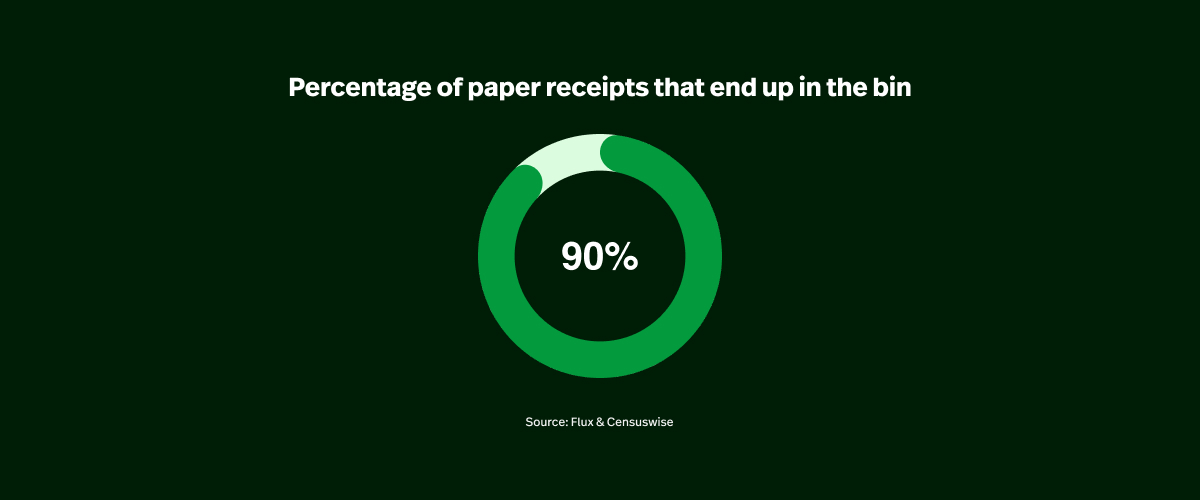
2023 has been a mixed bag for those of us in the hospitality industry. While the year definitely wasn’t plain sailing, there was a slight improvement compared to its Covid-tainted predecessors. However, several back-to-back interest rate hikes and a cost of living crisis meant hospitality businesses have been battling decreasing customer spending and consumer confidence.
With this in mind, we’ve analysed industry data and customer sentiment to pinpoint the most influential restaurant trends for 2024 to help hospitality businesses prepare for what’s to come in the year ahead.
Let’s dive in.
Restaurant trends for 2024
- Surge in demand for non-alcoholic beverages
- Menus under the microscope
- Catering to dietary requirements
- Offering experiences will engage customers
- Sustainable practices are a priority
- Minimising food waste is crucial
- Adoption of AI will increase
- Online food delivery remains dominant
- Loyalty programs will create opportunities
1. Surge in demand for non-alcoholic beverages
Alcohol-free beer, wine, and spirits are on the rise in Australia and are set to be even bigger hits among consumers in 2024.
According to IWSR, volumes of no-alcohol beer/cider, wines, spirits and RTDs increased by approximately 60% in 2022, and they predict this will rise by a further 31% by the end of 2024.
While there are several factors impacting the recent surge in popularity of non-alcoholic drinks, from cost of living pressures to health concerns and better quality non-alcoholic alternatives, younger generations are the real driving force behind demand for non-alcoholic options.
A recent study found that the proportion of people aged 18 to 24 who abstained from drinking increased from 13% to 21% over a 12-year period. This means that more than three in five 18-24 year olds are now abstaining from alcohol, compared to those over a decade ago.
With this in mind, it’s likely non-alcoholic drinks will take up more real estate on restaurant beverage menus in 2024. Instead of customers having to ask if there are any non-alcoholic options (aside from juices and sodas), expect to see a section dedicated to non-alcoholic options, including no-alcohol beer, wines, spirits and virgin cocktails.
2. Menus under the microscope
When dining out, customers are looking for more than just a decent meal, with a recent survey finding that 84% of diners want a surprising menu or theme, and 74% are looking for a truly unique experience.
With the ongoing cost of living crisis causing a decrease in discretionary spending, restaurants must find new ways to entice people through their doors and spend their hard-earned cash. One of the best ways to do this is to constantly innovate, presenting customers with new and unique menus to pique their interest and curiosity.
With this in mind, it’s unsurprising that in a recent survey of Australian restauranteurs, over one-third said introducing a new menu with innovative dishes was a top priority for the next 12 months.
In 2024, we can expect to see restaurants deviating from their usual menus, which might only change on a seasonal basis or rarely change at all.
Instead, we can anticipate a range of menus being offered, depending on the day of the week or even the time of day. From bottomless drinks to farm-to-table, fusion foods, themed cuisine, native dishes and limited-time menus – variety will be the name of the game in 2024.

3. Catering to dietary requirements
An increasing number of Aussies are taking a keen interest in what they eat, from plant-based diets to gluten-free and dairy-free alternatives. For example, Australia was the second-most popular nation globally for vegans in 2023, behind only the UK, and more than 1 in 10 Aussies follow a gluten-free diet – providing venues with a huge opportunity to capitalise on in 2024.
With this in mind, hospitality venues will start to fine-tune their offerings in 2024 to appeal to this fast-growing market of diet-conscious consumers.
In 2024, 28% of restaurants plan to increase their focus on dietary preferences. Therefore, we can expect to see more restaurants leaning into plant-based menus and offering dietary alternatives, such as dairy-free cheese and gluten-free pasta.
4. Offering experiences will engage customers
In the same vein as menu innovation, restaurants will look to broaden their appeal even further by incorporating different experiences into their offering.
With 75% of diners willing to pay more for a one-of-a-kind dining experience, keeping customers engaged so they return as repeat customers will be a big focus for restaurants in 2024.
While the type of experience a restaurant can offer will depend on the venue, location, target customer, and environment, we anticipate seeing various events pop up at restaurants throughout 2024.
From tasting evenings to trivia nights, live music, cooking classes, art shows, immersive dining and live cooking demonstrations, restaurants have huge potential to broaden their offerings and get more customers through their doors in the new year.
5. Sustainable practices are a priority
According to IBIS World, 87% of Australians are concerned about environmental issues and sustainability. For example, a recent study found that over one-third of Aussies want to minimise the use of single-use plastic.
While the sustainability movement has witnessed significant traction in the last decade, consumers are now actively aligning their purchasing behaviours with sustainable and environmentally friendly practices, with a Nielsen study finding that 66% of consumers are willing to pay more for sustainable products.
In 2024, hospitality businesses will look to do more than simply recycle their discarded products. Instead, they’ll aim to reduce their consumption in the first place.
With 90% of paper receipts ending up in the bin, many restaurants will opt for digital alternatives to reduce paper waste. The same goes for order dockets, with traditional kitchen printers being replaced with bump screens, eliminating the need for printer paper.

It’s also likely that more venues will begin to position themselves as plastic-free to emphasise their commitment to sustainability.
While businesses have already adopted some of these practices, you can expect to see more venues replacing plastic straws with paper ones, removing plastic cutlery or packaging from takeaway orders and incentivising customers to use reusable coffee cups.
6. Minimising food waste is crucial
A 2023 Statista study found that 42% of Aussies want to minimise food waste. Unfortunately, the hospitality industry isn’t an innocent bystander when it comes to food waste, with at least 40% of food bought for inventory never making it past the back of the house.

Reducing unnecessary food waste will be a big priority for restaurants in 2024, and recent data shows that 29% of restaurants plan to offer more sustainable and eco-friendly dining options in the new year.
Aside from donating leftovers to charities and utilising smart inventory tools to curb wastage, many restaurants will look for inventive ways to upcycle their surplus or unused ingredients.
Making pickles and relishes from leftover veggies or candying discarded fruit slices are just some ways restaurants are likely to tackle food waste in the new year.
Sourcing from local suppliers will also be a priority for restaurants as it minimises the time ingredients spend on a plane or truck, ensuring fresher produce for longer and reducing the risk of wastage. Plus, locally sourced produce minimises your carbon footprint and supports the local economy – both of which are important to customers.
7. Adoption of AI will increase
Artificial intelligence (AI) was a hot topic in 2023 as different AI programs became readily available to the mass market. As we move into 2024, AI will play a more prominent role in the hospitality industry, helping businesses improve efficiency and streamline operations.
When it comes to AI, we have barely scratched the surface of its capabilities, and the industry is set to boom in the coming years. According to Statista, the AI market is set to grow by 44% in the next 12 months alone and is projected to grow by 180% by 2026.
But what does this mean for the restaurant industry in 2024?
From reducing food waste to enhancing marketing and optimising staff rosters, AI is already assisting restaurants with day-to-day tasks. However, in 2024, AI’s capabilities will crank up a notch.
We’re already witnessing AI being integrated into POS systems, enabling restaurants to automate and streamline time-consuming processes like stocktakes and provide smart menu and margin recommendations based on sales data.
With the AI market expanding at lightning speed, we can expect to see numerous new programs that will help restaurants optimise all areas of their business – from cutting costs to enhancing customer service, automating inventory management and customising menus.
8. Online food delivery remains dominant
According to Statista, in 2023, 3.4 million Australians used an online delivery platform, like Uber Eats, to order food for delivery. In 2024, this is projected to jump to 4 million, an increase of 18%.
With this in mind, it’s unsurprising that a recent study found that restaurants offering online food delivery estimate that 34.5% of their revenue comes through the channel.
As we mentioned earlier, inflation and the cost of living crisis are impacting consumers, and many everyday Aussies are cutting back on discretionary spending. However, according to research from Deliverect, Aussies are purchasing more takeaway than ever before, despite the cost of living pressures.
Pre-inflation, 56% of Aussies ordered takeaway up to three times a week. According to Deliverect, this has now jumped to 60% of Australians. From the research, it’s clear that consumers are favouring takeaway rather than cutting back and, instead, are reducing spending in other areas – such as going out for dinner and drinks, purchasing new clothes and spending money on travel.
If the cost of living crisis extends into 2024, we can expect to see an increasing number of restaurants incorporating online food delivery into their service. Recent data shows that 32% of restaurants are already planning to expand their delivery and takeaway services in the coming year.
While many restaurants already offer online food delivery, it may not have been their primary focus. However, as we enter the new year, we can anticipate a shift in how restaurants treat the online delivery arm of their business. Expect to see dedicated online-only menus that have been curated to include dishes that travel well or cook-at-home options to offer a more creative experience.

9. Loyalty programs will create opportunities
With customers feeling the financial pinch and being more selective with where they spend their money, loyalty programs that offer exciting incentives and discounts will be a crucial tool for hospitality venues in 2024.
Well-executed loyalty programs can be an excellent way to entice new customers through the door and keep them coming back. According to Statista, 68% of Australians say they shop more frequently with a business that has a loyalty program they like.
Compared to other industries, the loyalty program market for restaurants is relatively undersaturated. According to Statista, only 29% of Australians say they often engage with a restaurant loyalty program.
This highlights a huge potential for restaurants to launch their own initiative to attract and retain customers in the new year, with 31% of restaurants already planning to launch a loyalty program in the next 12 months.
While the traditional concept of a stamp card that is checked off every time a customer makes a purchase is tried and tested, we can expect to see more curated, personalised loyalty programs in 2024. From sign-up gifts to birthday specials, tiered rewards and bonus gifts, there’s a huge opportunity for restaurants to launch, redesign or expand on their loyalty offering in the new year.
Restaurant trends 2024: stay ahead of the curve
As the last few years have taught us, it’s difficult to predict what’s around the corner, and there’s no surefire way to know exactly what will happen in 2024.
While rising inflation poses a risk to businesses in the coming months, there are still lots of opportunities for restaurants, from innovative menus to experiential dining, to increase their offerings and broaden their appeal to a diverse range of customers.
If there’s one thing we know for sure, 2024 will keep us on our toes, and the most successful restaurants will be those who can embrace change and adapt quickly. This means staying agile, flexible and equipped with the tools and technology you need to make adjustments when needed so you can grow and thrive in 2024.

News you care about. Tips you can use.
Everything your business needs to grow, delivered straight to your inbox.


